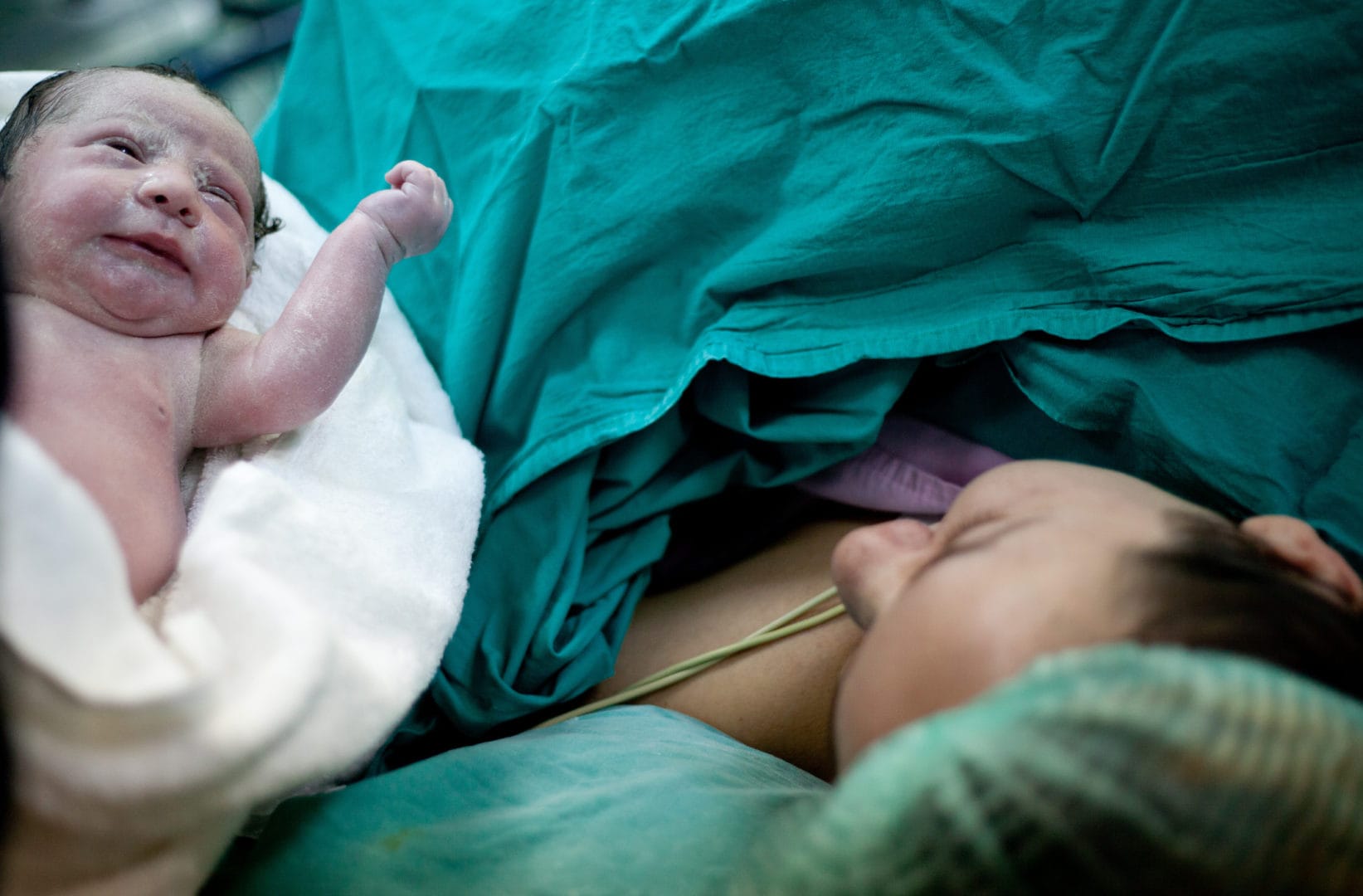It’s probably not what you imagined when you first discovered you were pregnant, but your doctor has recommended a scheduled C-section procedure for you. Though this is a very common and routine surgery — 32% of 2017 births were via C-section, according to the Centers for Disease Control and Prevention — it’s still a scary prospect for some moms. Knowing what to expect can help calm your nerves.
Dr. Jason James, the medical director at FemCare OB/GYN in Miami, Florida, and the chairman of the department of OB/GYN at Baptist Hospital of Miami says that C-sections are performed for a wide variety of reasons, ranging from patient preference to a multiple pregnancy of twins or triplets. He also says the best time to have a scheduled C-section is around 39 weeks’ gestation or one week before your due date. Hospitals vary, but James said his practice schedules the procedure four months in advance, so check with your doctor.
Tanya Bernard, a stay-at-home mom and seamstress from Poway, California, has four children — all of whom were born via a C-section procedure. Bernard explains her experience from when she arrived at the maternity floor of the hospital. “The nurse took me to my room, had me sign some papers and forms then I changed into a hospital gown. They took my vital signs, started an IV and drew blood. Then they shaved my lower abdomen and part of my pubic area.”
When the doctors were ready, the hospital staff had Bernard walk to the operating room, where she sat on the side of the bed as the anesthesiologist did a spinal injection. The staff then helped her lay down and she could immediately feel her feet going numb. Operating staff put sterile drapes over her, a catheter was inserted into her bladder, a blood pressure cuff was placed on her arm and a small curtain was placed in front of her head near her upper chest.
“My husband was brought in and they had already started the procedure. It was only a few minutes before they lowered the drape so I could watch them take the baby out,” shares Bernard. “The doctor suctioned my son’s nose and mouth and they held him up so I could see him better. They waited a minute or two, then clamped and cut the cord and took him to the warmer. They checked and weighed him, then brought him to me.”
Sometimes the newborn is held by the mom’s partner or can be placed on the mom’s chest while the surgery is finished. Then the new mom is either transferred to a small (typically private) recovery room or she is taken straight to her hospital room with her baby.
A doctor’s take
James, who has performed more than 1,000 C-sections, echoes much of what Bernard shares about her C-section procedure experience — but obviously, things look a little different from his point of view.
“A nurse will paint the abdomen with sterile solution, then the area to be operated on is draped off. An incision is made, usually in a side-to-side fashion at the bikini line. This incision is carried down through the various layers of tissue in the body (skin, fat, fascia and muscle),” explains James. The doctor will then cut an incision in the uterus and break the water manually.
“The surgeon then reaches his or her hand into the uterus while the assistant pushes gently on the top of the abdomen from above. In this way, the baby’s head (usually the part that is delivered first, unless the cesarean section is done for abnormal position) is delivered, the mouth and nose are suctioned, and the remainder of the baby is delivered,” James says. The umbilical cord is then cut and the baby is taken to the warmer to be checked, then wrapped in a blanket and cap and handed to the mom’s partner so she can see her baby.
The surgeon will remove the umbilical cord and placenta, before doing a visual check of the uterus to make sure everything is OK. The medical team will also give pitocin to the new mom through an IV, explains James — this will ensure that the uterus contracts and will minimize bleeding.
“At this point, the surgeon makes sure that everything looks normal, and begins repairing all the layers that were cut in reverse order, ending with the skin, which is closed in one of various ways (sutures, staples, glue). This concludes the surgery, the patient is cleaned up and moved to the recovery room,” says James.
A C-section isn’t the same as a vaginal birth, but the end result is the same – your baby’s introduction to the world!
* This article is for general informational purposes only. It is not intended nor implied to be providing medical advice and is not a substitute for such advice. The reader should always consult a health care provider concerning any medical condition or treatment plan. Neither Care.com nor the author assumes any responsibility or liability with respect to use of any information contained herein.






